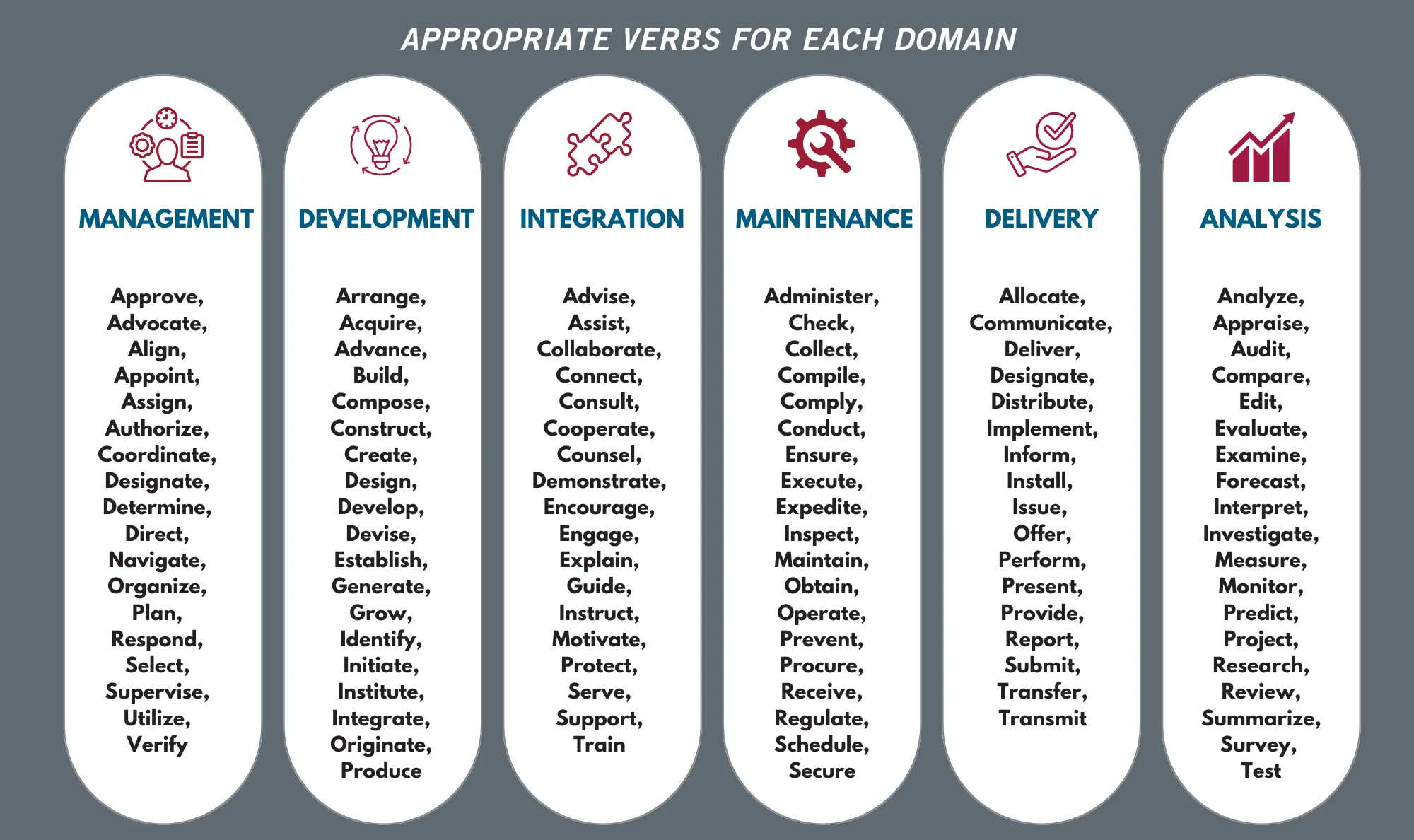Objectives can be operational and strategic. Operational objectives assess the effectiveness of the unit at meeting its mission and goals. They are usually written in the present tense and reflect the overall purpose of the unit. Example: “The Business and Financial Service Office maintains an accurate, secure payment system. . .”
Strategic Objectives assess the results of strategic initiatives to ensure proper planning and positive impact. These are written in a future tense and are usually based on a planned activity of the unit. Example: “Over the next year, the Business and Financial Services Office will expand hours of operation to improve service to staff. . .”
Types of Objectives
When writing an outcome objective, think about how the process should function and what the optimal process outputs are.
- Process based objectives
- Describe the processes and procedures of the unit: “The Business Services Office will promptly process invoices.”
- Satisfaction based objectives
- Describe the customer experience: “Students will express satisfaction with the registration experience.”
- Outcomes based objectives
- Describe the learning that will take place because of an activity: Students will learn how to use library resources.
Writing Objective Statements
Subject
Identify the target audience for the activity, service, or outcome.
Example: “First-generation students”
Action Verb
Select an action verb that reflects what you will do.
Example: “Provide”
Change
Specify what you are offering or changing—an office, service, program, or process.
Example: “Four professional leadership and volunteer service opportunities”
When and Impact
Clarify the timing and expected impact of your action.
Example: “By the end of the academic year, to enhance retention rates”
Examples
“By the end of the academic year, provide four professional leadership and volunteer opportunities for first-generation students to increase engagement and support higher retention rates.”
“By July XXXX, develop and implement a comprehensive marketing plan for all Student Involvement events to increase student awareness and participation by at least [insert target % or number of students].”
“By the end of this quarter, reduce average response time to customer queries by three minutes, improving overall customer satisfaction.”
“By May XXXX, reduce SMART conference costs by 20% through process improvements and strategic procurement management, enhancing resource efficiency and accessibility for participants.”
Tips
- Objectives should align with the goals and provide additional detail.
- Statements should be quantitative, including a clear target or benchmark.
- Ensure statements are concise and consistent with the associated goal.
- Using Administrative Taxonomies can help select the most appropriate action verb for each objective.
Use the Administrative Taxonomy (graphic or text version) below to find the right verb(s) for your objective statement.

Management
- approve
- advocate
- align
- appoint
- assign
- authorize
- coordinate
- designate
- determine
- direct
- navigate
- organize
- plan
- respond
- select
- supervise
- utilize
- verify
Development
- arrange
- acquire
- advance
- build
- compose
- construct
- create
- design
- develop
- devise
- establish
- generate
- grow
- identify
- initiate
- institute
- integrate
- originate
- produce
Integration
- advise
- assist
- collaborate
- connect
- consult
- cooperate
- counsel
- demonstrate
- encourage
- engage
- explain
- guide
- instruct
- motivate
- protect
- serve
- support
- train
Maintenance
- administer
- check
- collect
- compile
- comply
- conduct
- ensure
- execute
- expedite
- inspect
- maintain
- obtain
- operate
- prevent
- procure
- receive
- regulate
- schedule
- secure
Delivery
- allocate
- communicate
- deliver
- designate
- distribute
- implement
- inform
- install
- issue
- offer
- perform
- present
- provide
- report
- submit
- transfer
- transmit
Analysis
- analyze
- appraise
- audit
- compare
- edit
- evaluate
- examine
- forecast
- interpret
- investigate
- measure
- monitor
- predict
- project
- research
- review
- summarize
- survey
- test